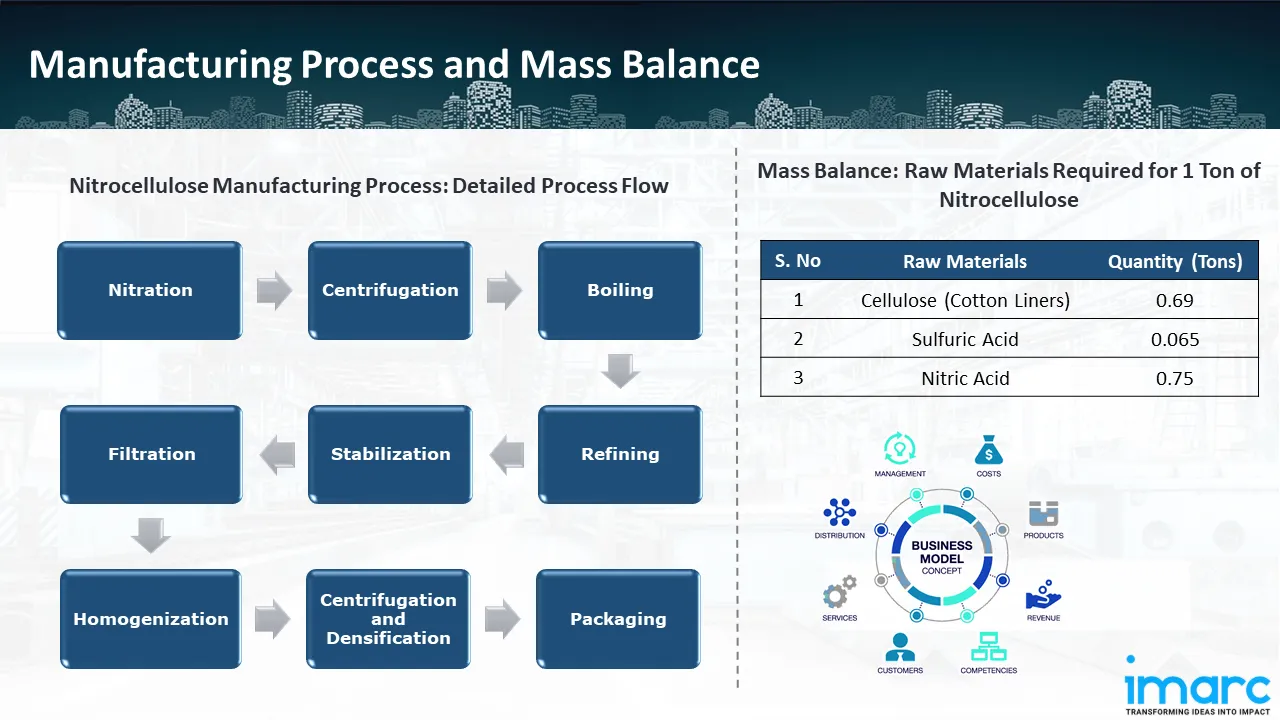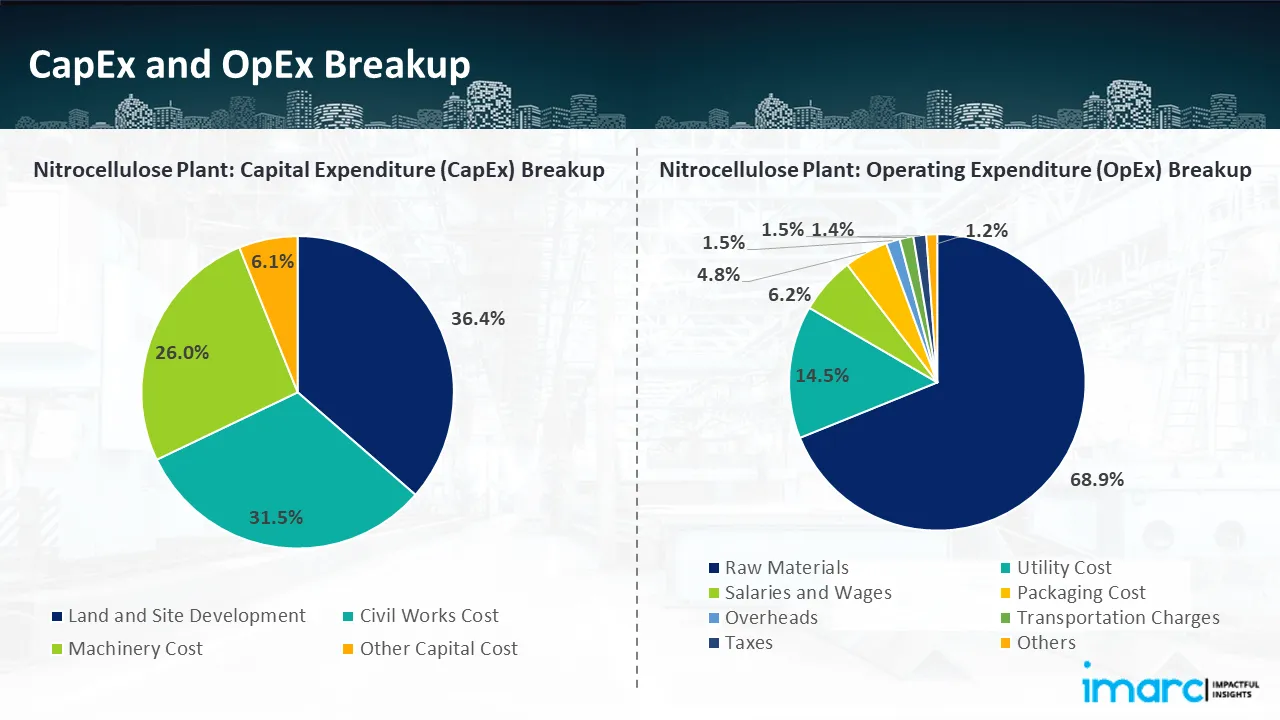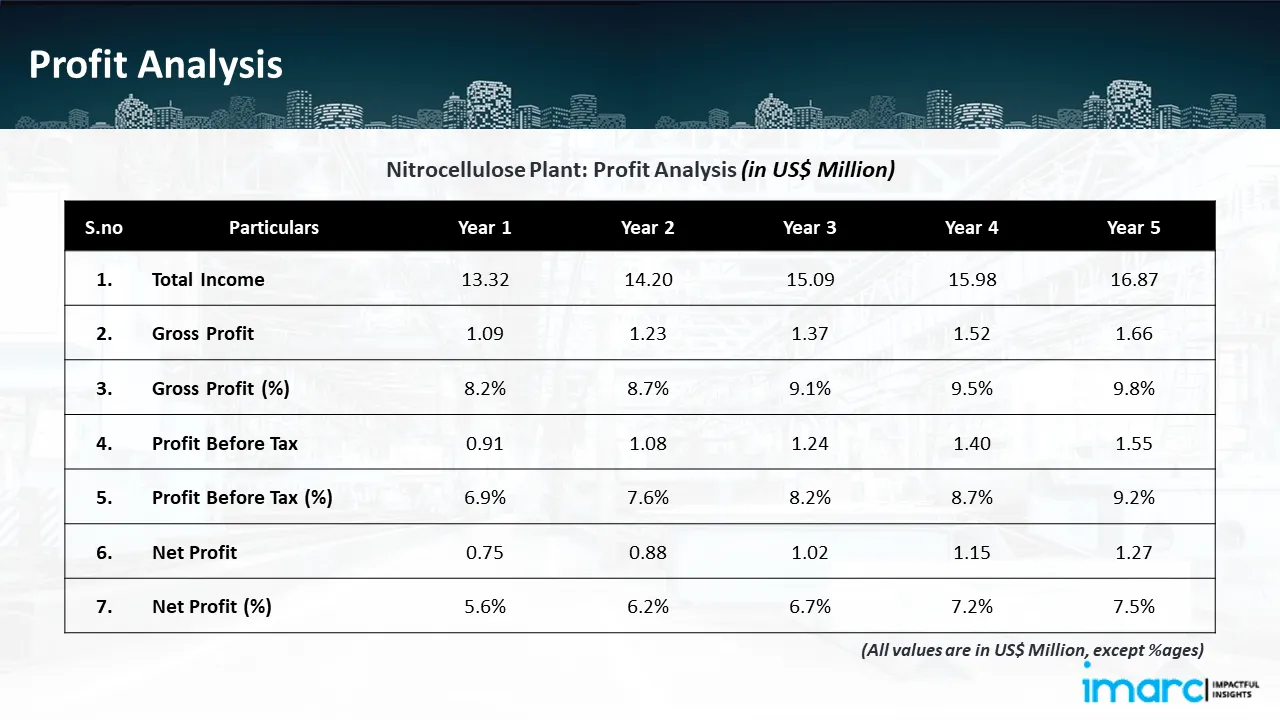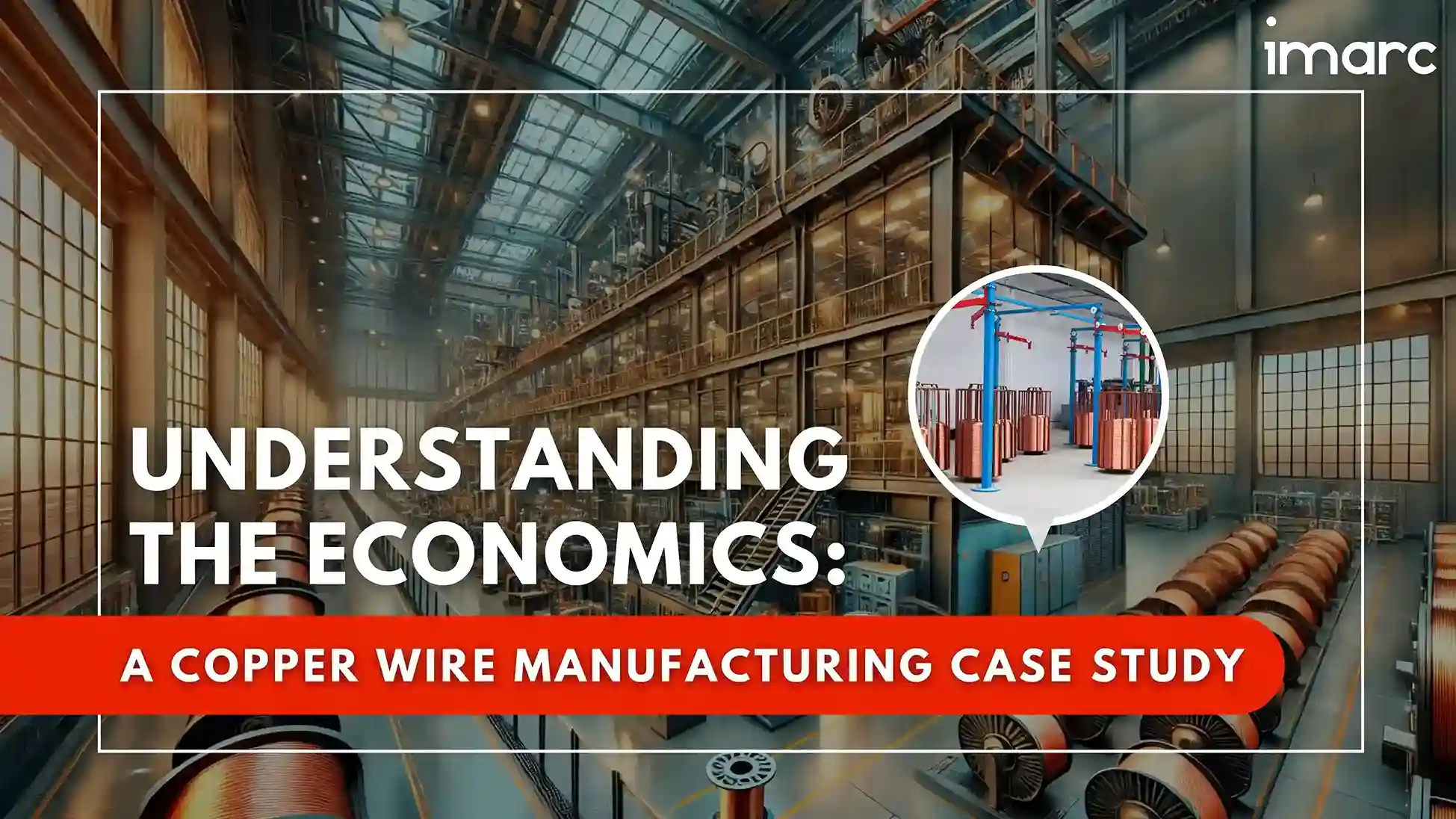Optimizing Nitrocellulose Production: A Comprehensive Cost Analysis

Nitrocellulose, also known as cellulose nitrate or guncotton, is a chemically modified form of cellulose known for its exceptional film-forming capabilities, strong adhesion, and biodegradability. It is widely used in applications such as wood coatings, printing inks, leather finishes, automotive paints, nail varnishes, and more. According to an IMARC study, the global nitrocellulose market was valued at USD 905.7 Million in 2024. Looking ahead, the market is expected to grow at a CAGR of approximately 4.46% from 2025 to 2033, reaching a projected value of US$ USD 1,346.5 Million by 2033. The market's growth is driven by nitrocellulose's adaptability and wide range of applications. Key factors fueling this expansion include its use in automotive coatings for premium finishes, increasing demand in the pharmaceutical industry for drug delivery systems, and its vital role in lacquers and printing inks for packaging and publishing. Ongoing technological advancements and research and development efforts have enabled the creation of tailored nitrocellulose solutions, enhancing both performance and sustainability. The rising demand for customized and eco-friendly derivatives, coupled with growth in the automotive and pharmaceutical sectors, further supports the market's upward trajectory.
Insights on Nitrocellulose: Latest News and Developments
- In November 2024, Poland announced plans to establish facilities for producing nitrocellulose and gunpowder essential for large-caliber ammunition. The agreement was signed by the Industrial Development Agency, Grupa Azoty, Polska Grupa Zbrojeniowa, and Mesko. These explosive production facilities are vital for advancing Poland's ammunition manufacturing capabilities.
- In October 2024, MSM Group, the Slovak subsidiary of the CSG industrial group, signed a purchase agreement with the U.S.-based publicly traded company IFF to acquire its nitrocellulose business, including the associated plant and the Walsrode Industrial Park located in Lower Saxony, Germany.
- In May 2024, the Ministry of Economic Affairs (MOEA) announced an expansion of export restrictions to Russia and Belarus, including nitrocellulose in the list of controlled items. This updated policy officially took effect on June 14, 2024.
- In May 2023, Eurenco, a French company and a European leader in energetic materials, announced the resumption of nitrocellulose production at its Bergerac facility.
Case Study on Cost Model of Nitrocellulose Manufacturing Plant
Objective: One of our clients has approached us to conduct a feasibility study for establishing a mid to large-scale nitrocellulose manufacturing plant in Switzerland. We have developed a comprehensive financial model for the plant's setup and operations. The proposed facility is designed with an annual production capacity of 5,000 tons of nitrocellulose and will cover a land area of 7,000 square meters.
Manufacturing Process: The manufacturing process of nitrocellulose begins with nitration, where cellulose (derived from cotton or wood pulp) is treated with a mixture of nitric and sulfuric acids. This reaction replaces the hydroxyl groups in cellulose with nitro groups, creating nitrocellulose, which is highly flammable and reactive. The nitrated product then undergoes centrifugation to remove excess acids and water, reducing acid content for safer handling. Subsequently, the nitrocellulose is boiled in water to eliminate residual acids and impurities, ensuring thorough cleansing of by-products from the nitration process. The material is then subjected to refining, involving mechanical processing to achieve the desired consistency and remove additional impurities, further preparing it for stabilization. During stabilization, techniques are applied to enhance chemical stability and prevent spontaneous decomposition, improving safety and shelf life. The stabilized nitrocellulose is then filtered to remove remaining solids or contaminants, ensuring purity. Next, it undergoes homogenization to achieve a uniform texture and consistency, essential for industrial applications like coatings, inks, and explosives. Following this, the nitrocellulose is again centrifuged and densified, removing residual water or solvents and compacting the material for ease of handling. Finally, the nitrocellulose is packaged in drums or cardboard boxes for storage and transportation.

Mass Balance and Raw Material Required: The primary raw materials utilized in the nitrocellulose manufacturing plant include cellulose (cotton liners), sulfuric acid, and nitric acid. For a plant producing approximately 50 tons of nitrocellulose per day, the annual raw material requirements for the first year of operation are as follows: cellulose (2,588 tons), nitric acid (2,813 tons), and sulphuric acid (244 tons).
List of Machinery:
The following equipment was required for the proposed plant:
- Reactor
- Centrifuge
- Boiler
- Dryer
- Filling Machine
- Milling Machine
- Cooling System
Techno-Commercial Parameter:
- Capital Investment (CapEx): The total capital cost for establishing the proposed nitrocellulose manufacturing plant is approximately US$ 2.93 Million. Land and development expenses account for 36.4% of the total capital cost, while machinery costs are estimated at around US$ 0.77 Million. The civil work for a nitrocellulose manufacturing plant constitutes a significant portion of the total capital cost, construction of production buildings, storage facilities, wastewater treatment units, safety infrastructure, and administrative offices. This ensures a robust foundation for safe and efficient plant operations.
- Operating Expenditure (OpEx): In a nitrocellulose manufacturing plant, the raw material cost for the first year of operations is projected at US$ 7.89 Million. This estimate includes the cost of essential inputs such as cellulose (wood pulp), nitric acid, sulfuric acid, and other required chemicals. By the fifth year of operations, the total expenditure cost is expected to increase by 24.4% compared to the first year, driven by inflation, market fluctuations, and potential rises in the cost of key materials. Factors contributing to this increase include supply chain disruptions, growing market demand, and changes in global economic conditions.

- Profitability Analysis Year on Year Basis: The proposed nitrocellulose plant, with a capacity of XX tons per annum, achieved an impressive revenue of US$ 13.32 Million in its first year. We assisted our client in developing a detailed cost model, which projects steady growth, with revenue reaching US$ 16.87 Million by Year 5. Gross profit margins improve from 8.2% to 9.8%, and net profit margins rise from 5.6% to 7.5%, highlighting strong financial viability and operational efficiency.

Conclusion
Our financial model for the nitrocellulose manufacturing plant was meticulously designed to meet the client’s objectives. It provided a thorough analysis of production costs, including raw materials, manufacturing processes, capital expenditure, and operational expenses. Tailored to the specific requirement of producing 5,000 tons of nitrocellulose annually, the model highlights key cost drivers and forecasts profitability, considering market trends, inflation, and potential fluctuations in raw material prices. This comprehensive financial model offers the client valuable insights for strategic decision-making, demonstrating our commitment to delivering precise, client-focused solutions that ensure the long-term success of large-scale manufacturing projects.
IMARC's Financial Model Expertise: Helping Our Clients Explore Industry Economics
IMARC is a global market research company that offers a wide range of services, including market entry and expansion, market entry and opportunity assessment, competitive intelligence and benchmarking, procurement research, pricing and cost research, regulatory approvals and licensing, factory setup, factory auditing, company incorporation, incubation services, recruitment services, and marketing and sales.
Brief List of Our Services: Market Entry and Expansion
- Market Entry and Opportunity Assessment
- Competitive Intelligence and Benchmarking
- Procurement Research
- Pricing and Cost Research
- Sourcing
- Distribution Partner Identification
- Contract Manufacturer Identification
- Regulatory Approvals, and Licensing
- Factory Setup
- Factory Auditing
- Company Incorporation
- Incubation Services
- Recruitment Services
- Marketing and Sales
Under our factory setup services, we assist our clients in exploring the feasibility of their plants by providing comprehensive financial modeling. Additionally, we offer end-to-end consultation for setting up a plant in India or abroad. Our financial modeling includes an analysis of capital expenditure (CapEx) required to establish the manufacturing facility, covering costs such as land acquisition, building infrastructure, purchasing high-tech production equipment, and installation. Furthermore, the layout and design of the factory significantly influence operational efficiency, energy consumption, and labor productivity, all of which impact long-term operational expenditure (OpEx). So, every parameter is covered in the analysis.
At IMARC, we leverage our comprehensive market research expertise to support companies in every aspect of their business journey, from market entry and expansion to operational efficiency and innovation. By integrating our factory setup services with our deep knowledge of industry dynamics, we empower our clients to not only establish manufacturing facilities but also strategically position themselves in highly competitive markets. Our financial modeling and end-to-end consultation services ensure that clients can explore the feasibility of their plant setups while also gaining insights into competitors' strategies, technological advancements, and regulatory landscapes. This holistic approach enables our clients to make informed decisions, optimize their operations, and align with sustainable practices, ultimately driving long-term success and growth.
Contact Us
Have a question or need assistance? Please complete the form with your inquiry or reach out by emailing us on sales@imarcgroup.com.

_11zon.webp)